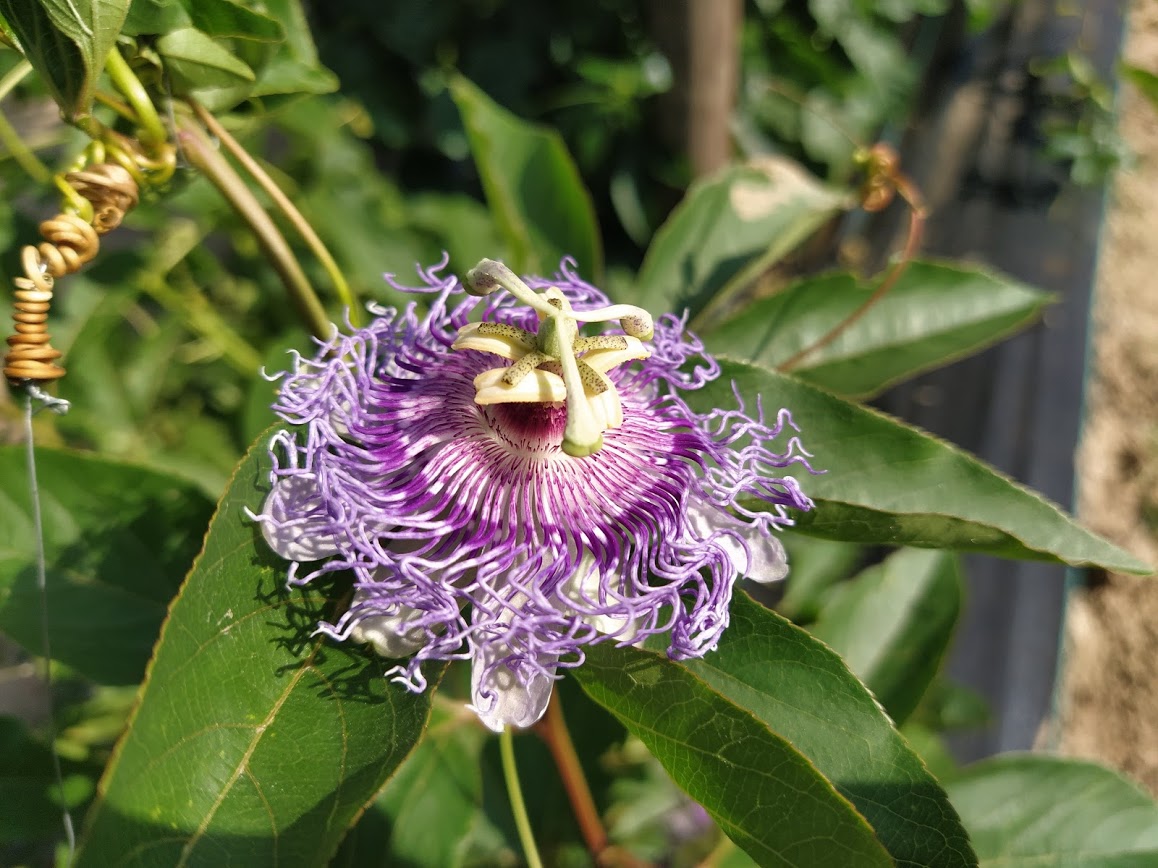
Passionflower Passiflora incarnata
Image Credit Wikipedia
Native Plant
“Passiflora incarnata, commonly known as maypop, purple passionflower, true passionflower, wild apricot, and wild passion vine, is a fast-growing perennial vine with climbing or trailing stems. A member of the passionflower genus Passiflora, the maypop has large, intricate flowers with prominent styles and stamens. One of the hardiest species of passionflower, it is both found as a wildflower in the southern United States and in cultivation for its fruit and striking bluish purple blooms. … The large flower is typically arranged in a ring above the petals and sepals. They are pollinated by insects such as bumblebees and carpenter bees, and are self-sterile. The flower normally begins to bloom in July.” Wikipedia
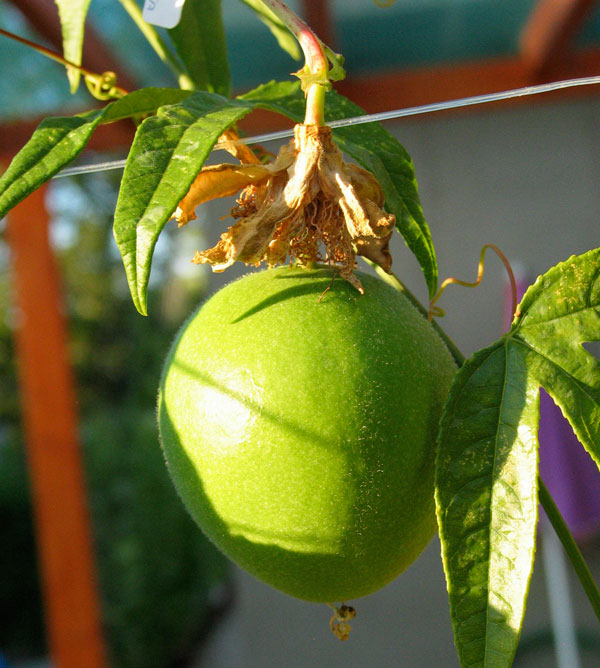
Passionflower Passiflora incarnata Fruit
Image Credit Wikipedia
“The fleshy fruit, also referred to as a maypop, is an oval yellowish berry about the size of a hen egg; it is green, though it may become yellow-green to yellow-orange as it matures. Like other passifloras, the pulp is gelatinous and encases the seeds. The color of the pulp is originally white and becomes a dull yellow when ripe. The seeds are black and approximately 5 mm in size. As with other passifloras, it is the larval food of a number of lepidoptera species, including the zebra longwing, the Gulf fritillary, the crimson-patched longwing, the Julia, the Plebeian sphinx, and the variegated fritillary.[3] In many cases its fruit is very popular with wildlife. The egg-shaped green fruits ‘may pop’ when stepped on. This phenomenon gives the P. incarnata its common name, as well as the fact that its roots can remain dormant for most of the winter underground and then the rest of the plant “pops” out of the ground by May, unharmed by the snow.” Wikipedia
Passionflower Is a Host to Butterflies

Zebra Longwing Butterfly
Image Credit: Wikipedia
‘The species is distributed across South and Central America and as far north as southern Texas and peninsular Florida; there are migrations north into other American states in the warmer months.[4]
‘Zebra longwing adults roost communally at night in groups of up to 60 adults for safety from predators. The adult butterflies are unusual in feeding on pollen as well as on nectar; the pollen enables them to synthesize cyanogenic glycosides that make their bodies toxic to potential predators. Caterpillars feed on various species of passionflower, evading the plants’ defensive trichomes by biting them off or laying silk mats over them.” Wikipedia
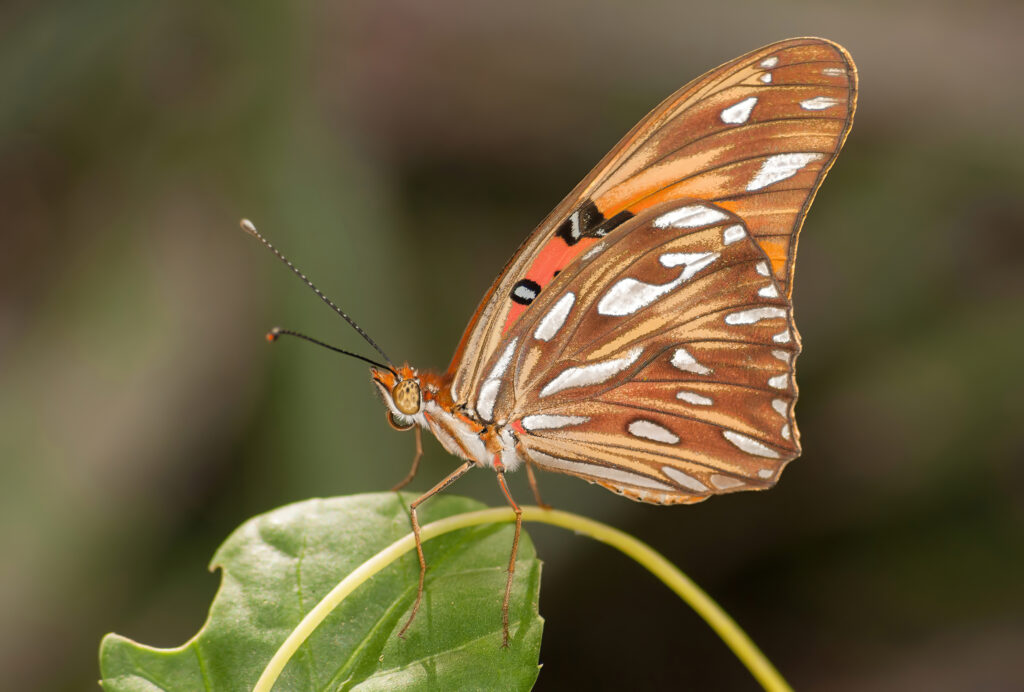
Gulf Fritillary Butterfly Ventral View
Image Credit: Wikipedia
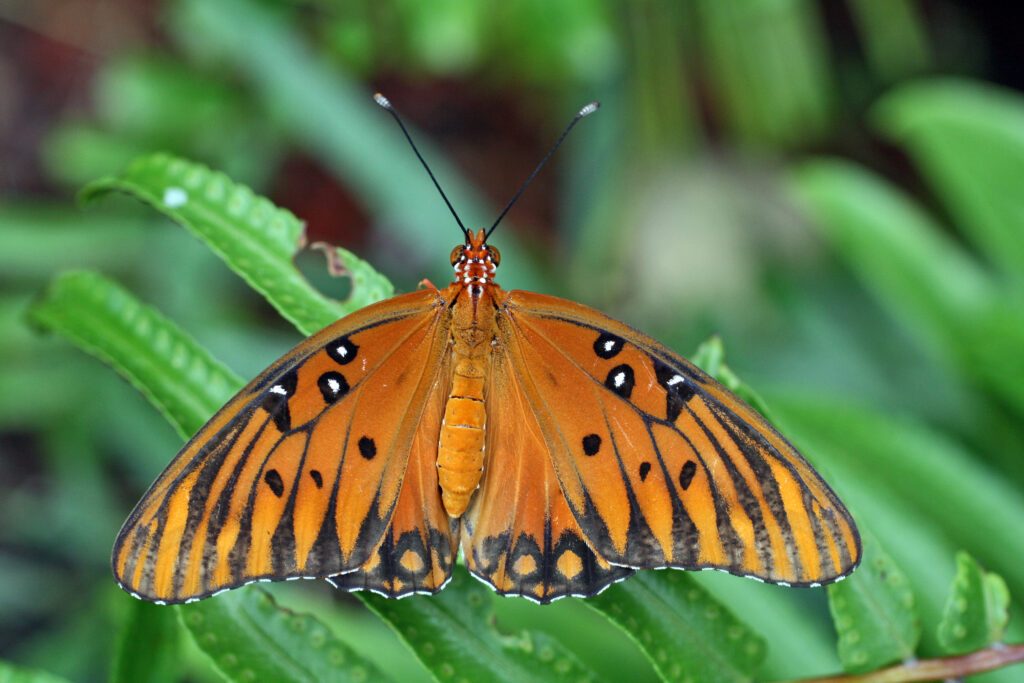 Gulf Fritillary Butterfly Dorsal View
Gulf Fritillary Butterfly Dorsal View
Image Credit: Wikipedia
“In its adult form, the gulf fritillary is a medium-sized butterfly that has extended forewings and a wingspan range of 6.5 to 9.5 cm. This butterfly exhibits sexual dimorphism as females are typically distinctively larger in size than males. The underside of the wings is brown and speckled with silvery white dots. In contrast, the top surface layer of the wings is deep orange in color with black streaks running across. In addition to the size difference between the two sexes, females are usually darker in color and are more marked with black streaks as compared to the males.” Wikipedia
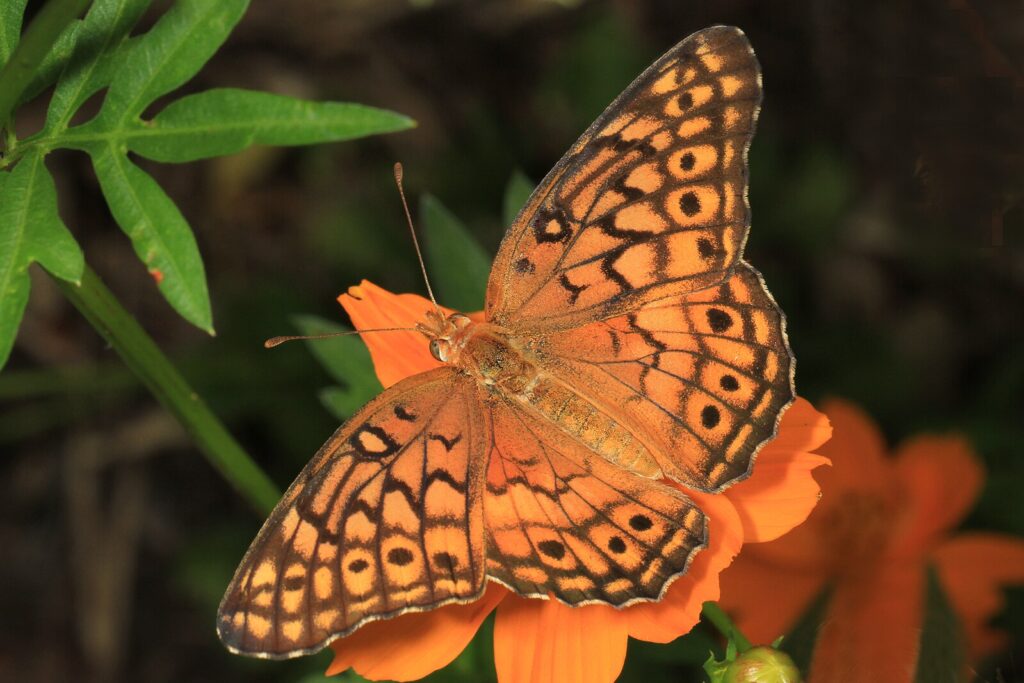
Variegated Fritillary
Image Credit: Wikimedia Commons
“The upperside of the wings is checkered with orange and black. Both the forewing and hindwing have a row of submarginal black spots and black median lines running across the wings.[3][4] The underside of the forewing is orange with a pale orange spot rimmed in black in the forewing cell. The underside of the hindwing is mottled with browns and grays with a pale postmedian band. There is no silvering.[4] The wingspan measures 1.75–2.25 inches (44–57 mm).[5]” Wikipedia
“Passiflora incarnata is easily cultivated and in its native range and homeland is a common low maintenance garden plant that can be trained to adorn fences and arbors. Passiflora incarnata fruit contain many seeds, each surrounded by an aril holding edible juice, and this juice can be consumed fresh or used to flavor processed products.[6] The wild maypop is an aggressive vine native to the southeastern United States extending into the central US reaching Illinois, Indiana, and Ohio.[7] The vines can carpet the floor of thickets within days in favorable weather. The plants grow in full sun and need direct sunlight for at least half of the day. The best soils for P. incarnata are well-drained [8] but the plants tolerate occasionally wet and acidic soils. The plants have a high drought tolerance. P. incarnata can be planted all the year in zone 6–11 (hardiness zone). The space between two plants is 36–60 inches (91.44 – 152.4 cm).[7] One to two years are necessary before they begin bearing. Each flower has a very short life (about one day). Then the fruit develops in two to three months.[8] The harvest depends on vine size and age of the plant but one reported 10–20 fruits per vine. Seeds can be collected in the fall after the fruit has begun to shrivel. There are some problems with nematodes and caterpillars in the culture of P. incarnata.[7]
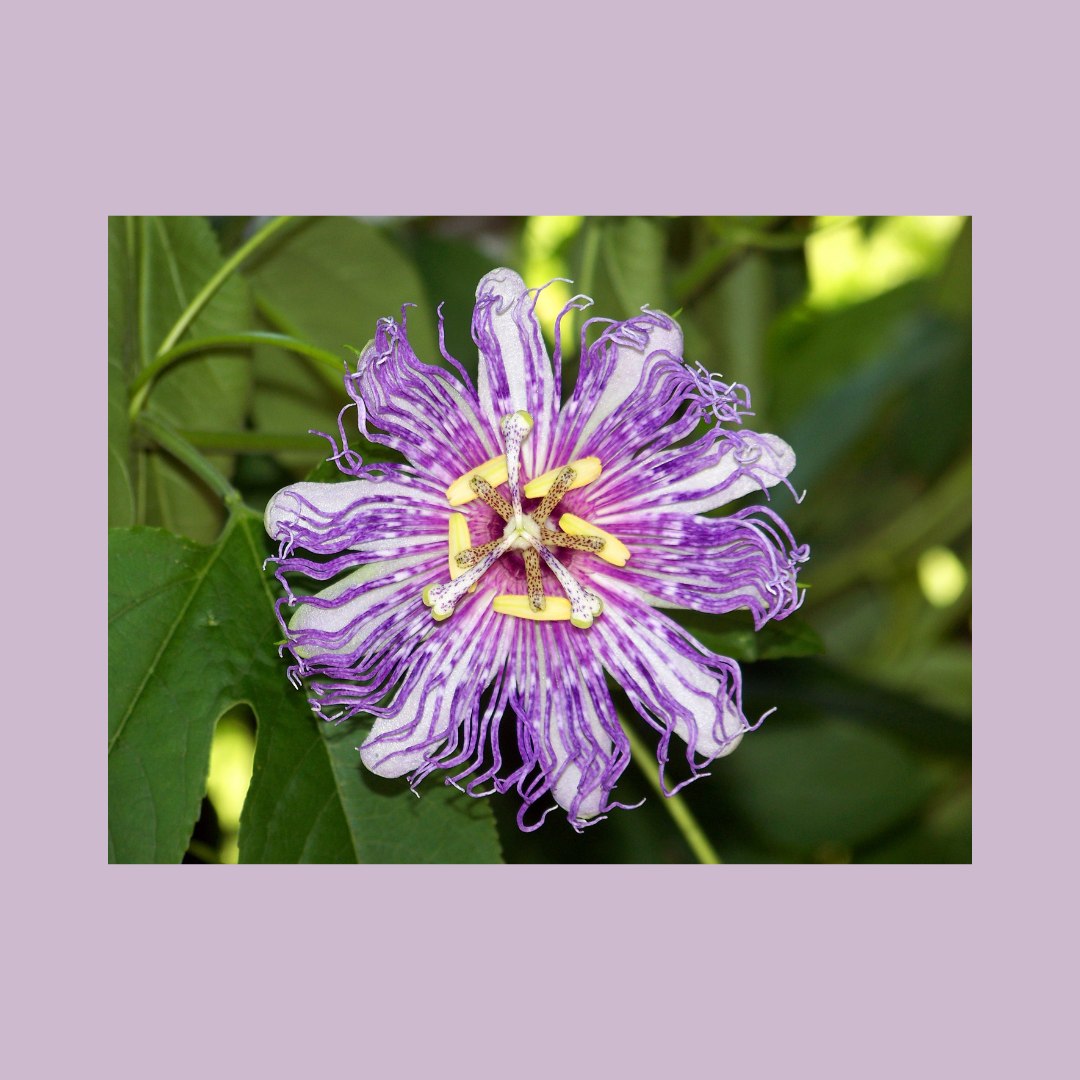
“The flowers appear suitable for carpenter bee pollination and may attract ruby-throated hummingbirds.[citation needed] As both bees and hummingbirds look for nectar, the pollen-filled flower anthers brush the back of the bee or the face of the hummingbird, enabling pollen to be readily transferred to the central sticky stigma….
Historical uses and folk medicine
Historically, the plant has been used as a herbal medicine.[13][14][15]
“Passionflower is included in pharmacopeias, such as the European and British Pharmacopoeias in which the dried aerial parts of the plant are mentioned. In North America and South America, tea made from the roots is used as a tonic.[14] The U.S. Food and Drug Administration withdrew approval of its marketing because manufacturers did not submit any evidence regarding its safety and effectiveness.[16]
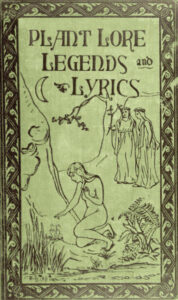
Information a bit passionflower in 1894 book Plant Lore, Legends, and Lyrics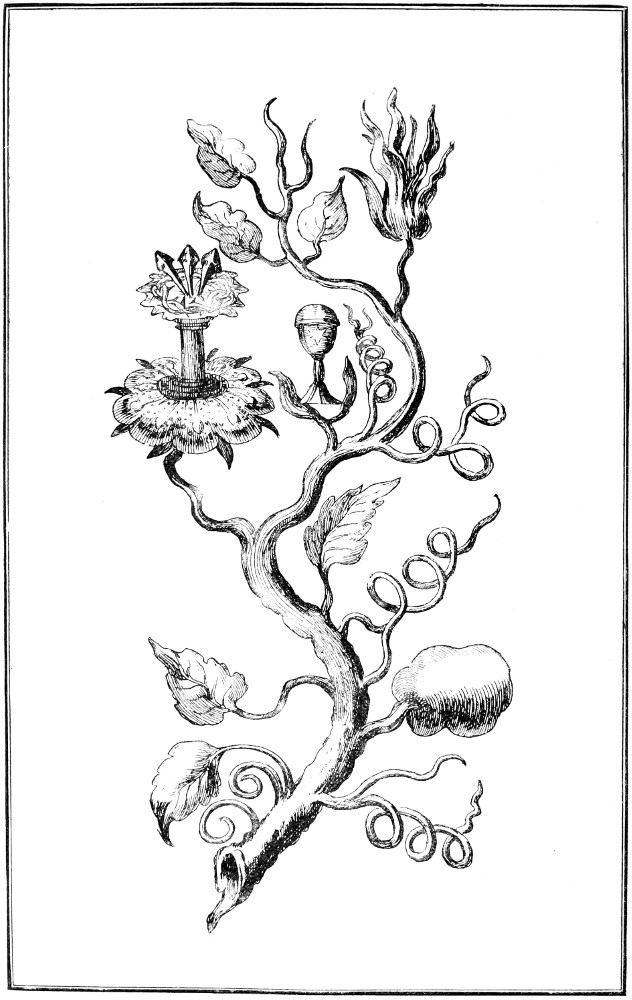
Image Credit: Folkard
PASSION-FLOWER.—
“The Passion-flower (Passiflora cœrulea) is a wild flower of the South American forests, and it is said that the Spaniards, when they first saw the lovely bloom of this plant, as it hung in rich festoons from the branches of the forest trees, regarded the magnificent blossom as a token that the Indians should be converted to Christianity, as they saw in its several parts the emblems of the Passion of our Lord.——In the year 1610, Jacomo Bosio, the author of an exhaustive treatise on the Cross of Calvary, was busily engaged on this work when there arrived in Rome an Augustinian friar, named Emmanuel de Villegas, a Mexican by birth. He brought with him, and showed to Bosio, the drawing of a flower so “stupendously marvellous,” that he hesitated making any mention of it in his book. However, some other drawings and descriptions were sent to him by inhabitants of New Spain, and certain Mexican Jesuits, sojourning at Rome, confirmed all the astonishing reports of this floral marvel; moreover, some Dominicans at Bologna engraved and published a drawing of it, accompanied by poems and descriptive essays. Bosio therefore conceived it to be his duty to present the Flos Passionis to the world as the most wondrous example of the Croce trionfante discovered in forest or field. The flower represents, he tells us, not so directly the Cross of our Lord, as the past mysteries of the Passion. It is a native of the Indies, of Peru, and of New Spain, where the Spaniards call it “the Flower of the Five Wounds,” and it had clearly been designed by the great Creator that it might, in due time, assist in the conversion of the heathen among whom it grows. Alluding to the bell-like shape assumed by the flower during the greater part of its existence (i.e., whilst it is expanding and fading), Bosio remarks: “And it may well be that, in His infinite wisdom, it pleased him to create it thus shut up and protected, as though to indicate that the wonderful mysteries of the Cross and of his Passion were to remain hidden from the heathen people of those countries until the time preordained by His Highest Majesty.”——The figure given of the Passion-flower in Bosio’s work shows the crown of thorns twisted and plaited, the three nails, and the column of the flagellation just as they appear on ecclesiastical banners, &c. “The upper petals,” writes Bosio in his description, “are tawny in Peru, but in New Spain they are white, tinged with rose. The filaments above resemble a blood-coloured fringe, as though suggesting the scourge with which our blessed Lord was tormented. The column rises in the middle. The nails are above it; the crown of thorns encircles the column; and close in the centre of the flower from which the column rises is a portion of a yellow colour, about the size of a reale, in which are five spots or stains of the hue of blood, evidently setting forth the five wounds received by our Lord on the Cross. The colour of the column, the crown, and the nails is a clear green. The crown itself is surrounded by a kind of veil, or very fine hair, of a violet colour, the filaments of which number seventy-two, answering to the number of thorns with which, according to tradition, our Lord’s crown was set; and the leaves of the plant, abundant and beautiful, are shaped like the head of a lance or pike, referring, no doubt, to that which pierced the side of our Saviour, whilst they are marked beneath with round spots, signifying the thirty pieces of silver.” Such is Bosio’s description of what he designates the “stupendous flower,” and the stir which his writings caused among the botanists and theologians of Italy soon brought about the introduction of the plant itself, which, before the year 1625, had established itself and blossomed in the garden of Cardinal Odoardo Farnese, at Rome. Aldinus, who was both the Cardinal’s physician and the controller of his garden, has left his description of the Passion-flower, and says of it:—
“This is the famous plant sung by poets and celebrated by orators, the plant reasoned about by philosophers with the utmost subtlety, praised by physicians for its marvellous virtues, sought for eagerly by the sick, wondered at by theologians, and venerated by all pious Christians.” In his description of the flower Aldinus sets forth “what theologians may really find in it.” He says: “The nails on the top are represented so exactly, that nothing more perfect can be imagined…. In the open flower they are twisted and marked with dark blood-like spots, as if they had been already removed from the Cross. The small undeveloped seed-vessels may be compared to the sponge full of vinegar offered to our Lord. The star-form of the half-opened flower may represent the star of the Wise Men; but the five petals, fully opened, the five wounds. The base of the ovary is the column of the flagellation. The filaments represent the scourges spotted with blood, and the purple circle on them is the crown of thorns, blood covered. The white petals symbolise the purity and brightness of Our Lord, and His white robe. The corniculata folia, the sub-petals, white inside and green without, figure hope and purity, and are sharply pointed, as if to indicate the ready eagerness with which each one of the faithful should embrace and consider the mysteries of the Passion. The leaves of the whole plant are set on singly, for there is one God, but are triply divided, for there are Three Persons. The plant itself would climb toward heaven, but cannot do so without support. So the Christian, whose nature is to climb, demands constant assistance. Cut down, it readily springs up again; and whoever holds the mysteries of the Passion in his heart cannot be hurt by the evil world. Its fruit is sweet and delicate, and the Passion of our Lord brings sweet and delectable fruit to us.” In his ‘Paradisus Terrestris,’ John Parkinson, writing in 1629, speaks of the “Virgin Climer,” as “a brave and too-much-desired plant,” with flowers which “make a tripartite shew of colours most delightfull,” and are “of a comfortable sweet sent, very acceptable.”——The plant’s native Indian name was Maracot; from the likeness of the fruit to a small Pomegranate, it was sometimes called Granadilla; the Mexican Jesuits named it Flor de las cinca llagas; but in Italy, it was usually known as Fior della Passione, the name which it has retained throughout Europe.
Discover more from Jacki Kellum
Subscribe to get the latest posts sent to your email.